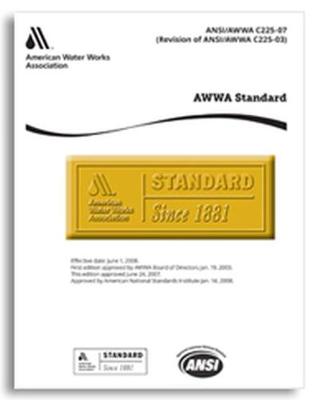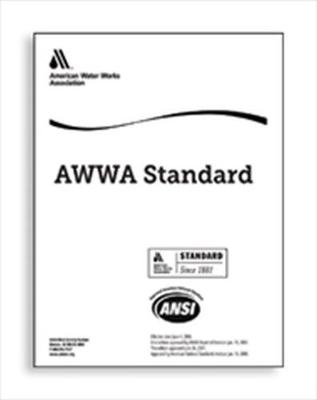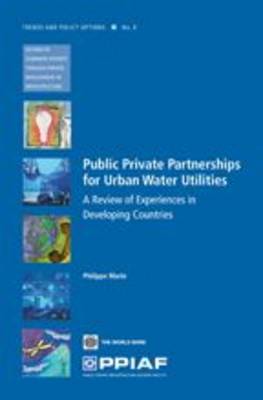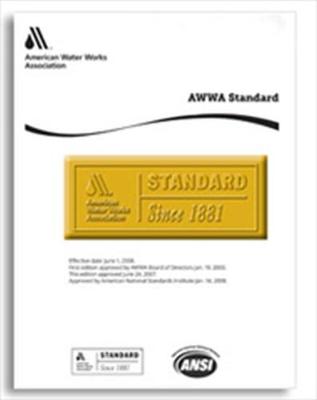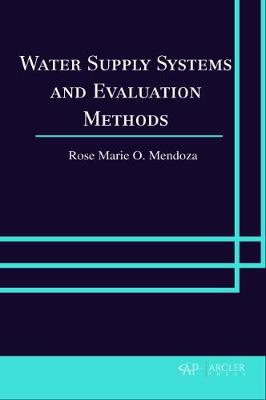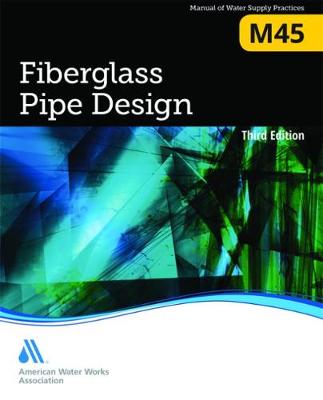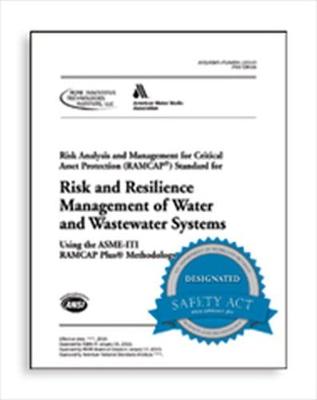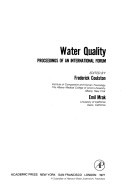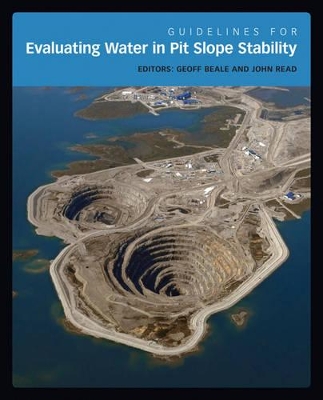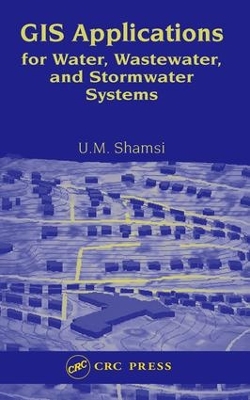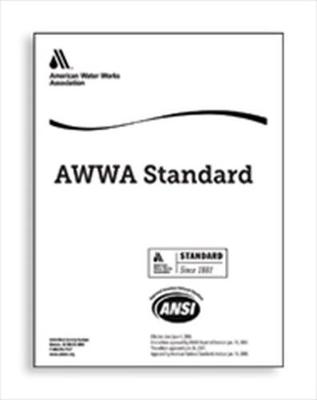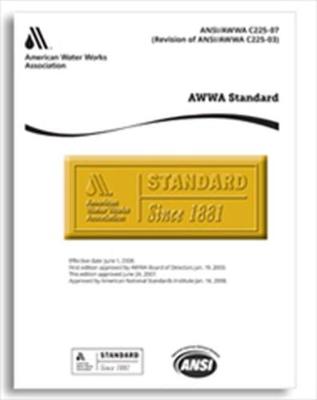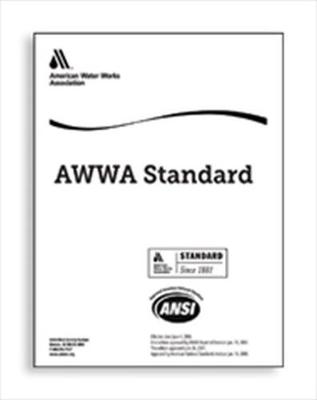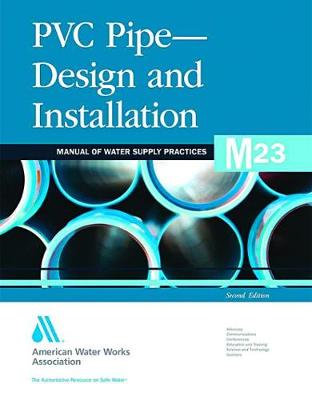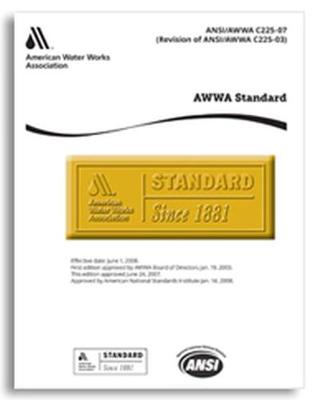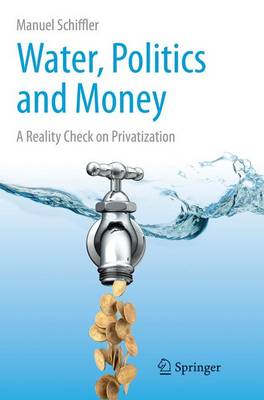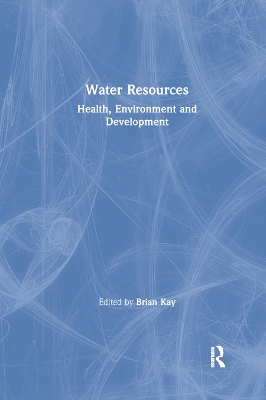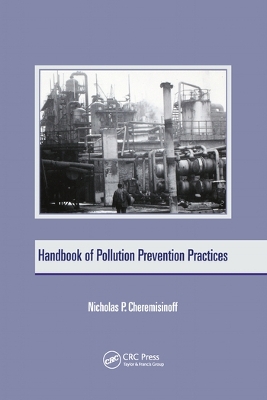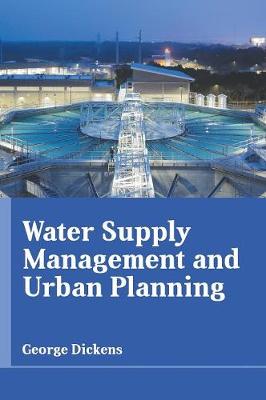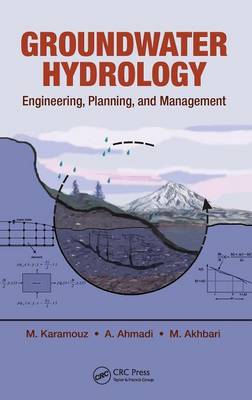C701-15 Cold-Water Meters-Turbine Type, for Customer Service
by American Water Works Association
This standard covers the various classes of cold-water turbine meters in sizes 3/4 in. (20 mm) through 20 in. (500 mm).
This standard describes hydraulic and pneumatic linear and quarter-turn actuators for operation of valves and slide gates in utility systems.
Public Private Partnerships for Urban Water Utilities
"'Public-Private Partnerships for Urban Water Utilities: A Review of Experiences in Developing Countries' analyzes the market growth of Public-Private Partnerships (PPPs) in the developing world since 1990, and the performance of more than 65 large water PPP projects-representing more than 100 million people-for access, service quality, operational efficiency, and tariff levels. Although a relatively small portion of the water utilities in the developing world are operated under PPPs (about 7 pe...
This standard describes crosslinked polyethylene (PEX) pressure tubing made from material having a standard PEX material designation code of PEX 1306, or higher, according to ASTM* F876 and intended for use as underground potable water, reclaimed water, and wastewater service lines in sizes . in. (13 mm) through 3 in. (76 mm) that conform to a standard dimension ratio of SDR9. Tubing may incorporate an optional polymeric outer layer.
Smart Water Grids
The effects of climate change, rapid urbanization, and aging infrastructure challenge water policymakers to confront a radical paradigm shift in water resources utilization. Recent advances in sensing, networking, processing, and control have provided the means for sustainable solutions in water management, and their implementation in water infrastructures is collectively referred to as "smart water grids." Smart water grids depend upon cyber-physical system principles to effectively respond to...
Aiming to provide comprehensive, state-of-the-art coverage of the safety and security of water supply systems, this book identifies advances in detection, monitoring and modeling, analytical methods, and research and development opportunities that will enable the water supply industry to further reduce risks associated with drinking water. It is the definitive reference for civil and environmental engineers involved in the planning, design, operation, and maintenance of water systems; water sup...
M45 Fiberglass Pipe Design (Manuals of Water Supply Practices)
by American Water Works Association
Selection, installation, and maintenance of fiberglass pipe in potable water systems.
This standard sets requirements for all-hazards risk and resilience analysis and management for the water sector and prescribes methods that can be used for addressing these requirements.
Guidelines for Evaluating Water in Pit Slope Stability
This book offers slope design practitioners a road map that will help them decide how to investigate and treat water pressures in pit slopes. Created as an outcome of the Large Open Pit project, an international research and technology transfer project, this book expands on the hydrogeological model chapter in the project's previous book Guidelines for Open Pit Slope Design.
An excellent guide for anyone with a water system or water system problem, Water Quality and Systems provides an A-Z reference for improving water quality, meeting new regulations, and reducing costs. Every page contains a time- and money-saving tip. The book covers water purity, renovations, design, construction, equipment, systems, cost reduction, maintenance, and more. It also includes information on the EPA's WAVE Saver program for the hotel/motel industry as well as coverage of other regula...
GIS Applications for Water, Wastewater, and Stormwater Systems
by U.M. Shamsi
Professionals involved in the planning, design, operation, and construction of water, wastewater, and stormwater systems need to understand the productivity-enhancing applications of GIS. Inspired by an ASCE-sponsored continuing education course taught by the author, GIS Applications for Water, Wastewater, and Stormwater Systems focuses on t
C509-15 Resilient-Seated Gate Valves for Water Supply Service
by American Water Works Association
This standard describes resilient-seated gate valves with nonrising stems (NRS) and outside screw-and-yoke (OS&Y) rising stems, including tapping gate valves for water supply service. The resilient-seated gate valve has been in service in various water utility applications since 1975.
The purpose of this standard is to define the minimum requirements for pilot-operated control valves, including sizing considerations, design verification, testing, delivery, handling, and storage.
C300-16 Reinforced Concrete Pressure Pipe, Steel-Cylinder Type
by American Water Works Association
This standard covers the manufacture of reinforced concrete cylinder pipe that is not prestressed or pretensioned in sizes 30 in. to 144 in. (760 mm to 3,660 mm), inclusive.
Groundwater Monitoring and Management through Hydrogeochemical Modeling Approach
by S. Chidambaram, K. Srinivasamoorthy, A. L. Ramanathan, and P. Anandhan
Modeling the fate of chemical constituents such as cations and anions, organic and inorganic ligands, etc., is essential to understand the long-term utility of groundwater for various purposes. The chemical modeling helps to describe the chemical characteristic of an aqueous system to solve a simultaneous set of equations, which explains the equilibrium reactions and mass balance on dissolved element for the output consists of theoretical distribution of aqueous species for dissolved elements....
M23 PVC Pipe - Design and Installation (Manual of Water Supply Practices)
by American Water Works Association
Design, installation, and maintenance of PVC pipe for drinking water systems.
C712-15 Cold-Water Meters, Singlejet Type
by American Water Works Association
This standard describes the various types and classes of cold-water, singlejet meters.
This book reveals all that can potentially happen when a private company takes over a local water supply system, both the good and the bad. Backed by real life stories of water privatization in action, author Manuel Schiffler presents a nuanced picture free of spin or fear mongering. Inside, readers will find a detailed analysis of the multiple forms of water privatization, from the outright sale of companies to various forms of public-private partnerships. After covering their respective stren...
Water Resources
This collection addresses the complexities of water management and the impact of environmental developments such as dams, reservoirs and irrigation schemes on public health. The main focus of the book is on vector-borne diseases such as malaria, arboviruses (dengue and encephalitides) and snail- borne schistosomiasis. These are examined from a wide range of intersectoral perspectives which encompass disciplines with often conflicting interests, for instance agriculture, aquaculture, urban develo...
Handbook of Pollution Prevention Practices (Environmental Science & Pollution)
by Nicholas P Cheremisinoff
This text provides approaches and methodologies for implementing pollution prevention (P2) and waste minimization programmes to reduce manufacturing operational costs significantly. It focuses on reducing manufacturing and environmental compliance costs by instituting feedstock substitution, improved operational schemes, recycling and by-product recovery, waste minimization, and energy efficiency policies, and offers project cost accounting tools that assist in evaluating money-saving P2 options...
We have identified a need to draw together knowledge of physiochemical and biological aspects of pollution in tropical aquatic systems. This book results from this and we hope will assist in providing management strategies to protect these systems from pollution effects. In organising the book we have, as far as possible, attempted to cover the range of topics important in understanding pollution in tropical areas. Authors who are expert in their particular fields have been invited to contribute...
Increasing demand for water, higher standards of living, depletion of resources of acceptable quality, and excessive water pollution due to urban, agricultural, and industrial expansions have caused intense environmental, social, economic, and political predicaments. More frequent and severe floods and droughts have changed the ability and resiliency of water infrastructure systems to operate and provide services to the public. These concerns and issues have also changed the way we plan and mana...
